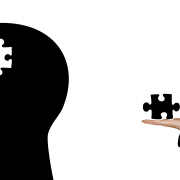Freedom (part 2)
Developing maturity is, at the neurological level, developing an inhibition of the brainstem by the cerebral cortex. In doing so, we notice improvements in the areas of recognition, working memory and the appearance of anxiety of separation.
It is around the age of three months that the palmer reflex begins to fade. This integration is known to coincide with the differentiation of pyramidal tract neurons in the additional motor cortex.
At this age, the connection between the cortex and the medulla oblongata undergoes intense myelination. It is via the neurotransmitter GABA that these connections occur within the cortico-bulbar tract.
The development of the frontal lobe leads to the development, a priori, of the motor zones, including the primary motor cortex, for example. As this process continues, it is the prefrontal cortex that develops.
This prefrontal cortex is responsible for more complex voluntary movements as well as behavioral performance.
The pre-frontal cortex can be divided into two parts:
– Pre-frontal dorso-lateral cortex;
– Pre frontal orbito-frontal cortex, which is connected to the limbic system.
Motor development contributes directly to the development of the pre-frontal cortex.
If synaptogenesis reaches its peak in the visual and auditory cortex a few months after birth, the increase in the number of synaptic junctions occurs much more slowly in the pre-frontal cortex.
It is only around the age of 4 that the synaptic density of the pre-frontal cortex “catches up” with that of the auditory cortex.
It has been postulated that the frontal lobes of the left and right hemispheres are specialized in approach and withdrawal behaviors, respectively. This observation stems in part from the fact that the left frontal region has been identified as an important center of intention, self-regulation and planning. It is thought that this region is the region that produces the behaviors described as free will.
It should be noted that, in the absence or impairment of the inhibitory systems, there might be well-known disorders of inhibition such as Tourette’s syndrome or obsessive-compulsive disorder.
https://www.ncbi.nlm.nih.gov/pmc/articles/PMC3385506/










Leave a Reply